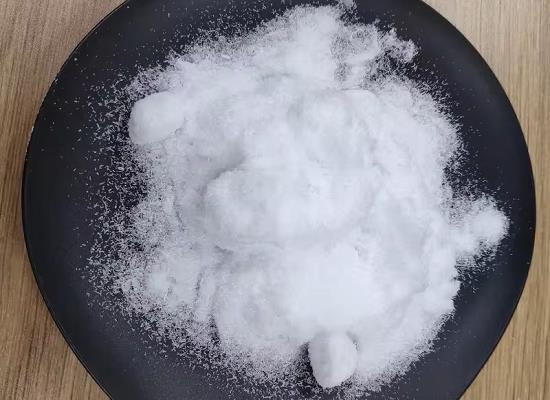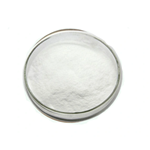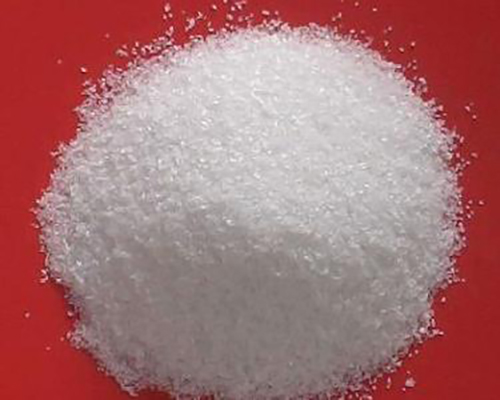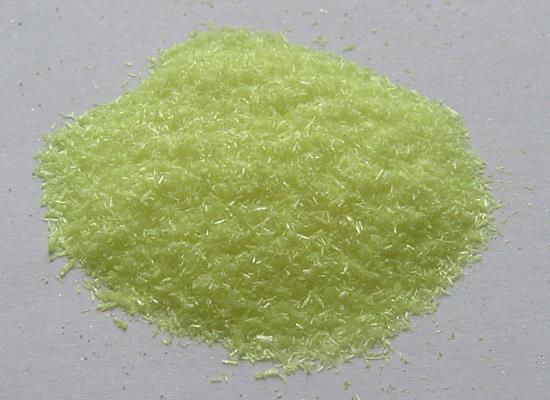Hydroxylamine Hydrochloride: Applications for Post-PCR Sterilization and its Environmental Hazards
General Description
Hydroxylamine hydrochloride shows promise as a post-PCR sterilization agent to prevent contamination in diagnostic laboratories. Research indicates that at concentrations of 250 mM or higher, Hydroxylamine hydrochloride effectively modifies PCR products, inhibiting their reamplification. This advancement addresses the challenge of exogenous nucleic acid contamination in PCR procedures. However, Hydroxylamine hydrochloride poses environmental hazards if released, with potential mobility in soil and limited bioaccumulation in aquatic organisms. Proper handling and disposal practices are crucial to mitigate its impact. Overall, while offering a solution to contamination issues in laboratories, the environmental risks of Hydroxylamine hydrochloride necessitate careful management to minimize adverse effects.

Figure 1. Hydroxylamine hydrochloride
Applications for Post-PCR Sterilization
Polymerase chain reaction (PCR) has revolutionized diagnostic laboratories, but contamination with exogenous nucleic acid remains a major challenge. One promising technique to address this issue is the use of hydroxylamine hydrochloride as a post-PCR sterilization agent. Hydroxylamine hydrochloride, a mutagenic agent that chemically modifies DNA, was tested in a recent study using PCR products from Herpes simplex virus and Borrelia burgdorferi. The PCR products were treated with varying concentrations of hydroxylamine hydrochloride and then reamplified. The results demonstrated that hydroxylamine hydrochloride, particularly at concentrations of 250 mM or higher, effectively modified the PCR products, preventing their amplification in subsequent PCR. The use of hydroxylamine hydrochloride for post-PCR sterilization represents a significant advancement in addressing contamination issues in diagnostic laboratories. Finding an optimal method to prevent contamination has been elusive, but hydroxylamine hydrochloride shows promise in offering a reliable means of preventing contamination from previous PCR products. Further research and validation of these findings could lead to the development of standardized protocols for the effective use of hydroxylamine hydrochloride in PCR procedures, enhancing the accuracy and reliability of PCR-based diagnostic testing. In conclusion, the application of hydroxylamine hydrochloride for post-PCR sterilization offers a potential solution to the issue of contamination with exogenous nucleic acid in diagnostic laboratories. With its ability to effectively modify PCR products at concentrations of 250 mM or higher, hydroxylamine hydrochloride represents a valuable tool for preventing contamination from previous PCR products. Further research and validation are needed to establish standardized protocols for the effective use of hydroxylamine hydrochloride in PCR procedures, but this promising technique holds great potential for enhancing the accuracy and reliability of PCR-based diagnostic testing. 1
Environmental Hazards
Hydroxylamine hydrochloride, a compound used as a reducing agent and an intermediate in the production of caprolactam, poses environmental hazards if released into the surroundings. When released into the air, Hydroxylamine hydrochloride exists as a vapor and undergoes degradation by reacting with hydroxyl radicals, with an estimated half-life of 18 hours. In soil, hHydroxylamine hydrochloride exhibits high mobility due to its estimated Koc value of 14, and its partial existence as a cation under acidic conditions may limit its mobility compared to neutral species. While volatilization from moist soil is not significant, it may occur from dry soil surfaces based on its vapor pressure. In aquatic environments, Hydroxylamine hydrochloride is not expected to adsorb to suspended solids or sediment, and its partial existence as a cation in water suggests limited volatilization from water surfaces. The compound's low bioconcentration factor (BCF) of 3 indicates a low potential for bioaccumulation in aquatic organisms. In the atmosphere, Hydroxylamine hydrochloride primarily exists as a vapor and degrades through reactions with hydroxyl radicals, with an estimated half-life of 18 hours. Abiotic degradation of Hydroxylamine hydrochloride by photochemically produced peroxy radicals is a significant environmental fate process in surface waters, with a measured half-life of about 2 hours. The compound's potential for bioconcentration in aquatic organisms is low, further reducing the risk of environmental harm. Occupational exposure to Hydroxylamine hydrochloride may occur through inhalation of dust particles and dermal contact, emphasizing the importance of proper handling and disposal practices to mitigate its environmental impact. In summary, Hydroxylamine hydrochloride's release into the environment can lead to air, soil, and water contamination, highlighting the need for careful management and control measures to minimize its adverse effects on ecosystems and human health. 2
Reference
1. Aslanzadeh J. Application of hydroxylamine hydrochloride for post-PCR sterilization. Mol Cell Probes. 1993; 7(2): 145-150.
2. Hydroxylamine Hydrochloride. National Center for Biotechnology Information. 2024; PubChem Compound Summary for CID 443297.
Related articles And Qustion
Lastest Price from Hydroxylamine hydrochloride manufacturers

US $20.00-10.00/kg2025-11-03
- CAS:
- 5470-11-1
- Min. Order:
- 20kg
- Purity:
- 99%
- Supply Ability:
- 1200tons

US $10.00/ASSAYS2025-05-04
- CAS:
- 5470-11-1
- Min. Order:
- 1ASSAYS
- Purity:
- 99%
- Supply Ability:
- 100kg



